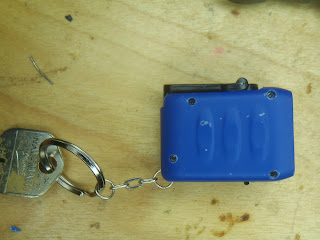GOOD PRACTICES
Sometimes its not the complexity of a project that makes it noteworthy, its the way in which it was built. A prime example of this is in a recent project of mine where I was asked by a coworker to build a small and simple device to act as a monetary off switch. It uses a 555 timer to give a momentary pulse to a relay that switches a high power load off for a fraction of a second. Because of the simplicity of this project it will be easy to see the good practices I used to make the device more reliable, easier to repair, modify and operate.
OUTSIDE IN
A rats nest of wires on a breadboard is not a finished project, it is an easily damaged mess. Things need to be permanently soldered together, glued to keep them from bending or breaking and protected by an enclosure. The enclosure has always been the hardest part for me so I like to start with it. I selected a small project box from radio shack (I keep some on hand) and designed everything to fit in it.
Source: beavishifi.com
NOT A BUILD LOG
I didn't take photos during the build of this project so I will show the photos of the finished item and tell you the good practices used.
Instructions for use and schematics for all boards
Turn pot accessible from outside. This allows adjustments to timing without dissembling the unit. It was recessed and designed to be only adjustable using a screwdriver so accidental changes were unlikely.
Proper use of space. Many different configurations were test fitted to determine what looked and worked best.
The battery is easy to remove without disrupting the other parts.
The 555 timer board has sockets and connectors to allow it to be removed without de-soldering or cutting anything. The board was also cut to size so it would fit nicely in the cases's vertical PCB slots.
The main IC (555 timer) is in a socket to it can be removed and replaced without de-soldering. The turn pot is hot glued down so the legs are not bearing the load
All wires are hot glued for strain relief.
The relay board uses header pins so it can be easily removed and replaced. There are better connectors but this is what I had on hand.
The relay board has the protection diode built in. The entire board needs to be replaced if the relay dies.
The external banana plugs are screwed and hot glued to provide extra support.
The button board is hot glued in so it is removable with a little heat. There is no easy way to screw it in so hot glue was the best option. The wire connector is hot glued on both sides to provide strain relief.
Don't forget to document your work! This blog is one of my ways of keeping a build log. I have many projects I've done that I have to relearn how I did them if I ever want to fix them. Keeping a log like this will help you in that process.
All in all a great little device that does its job and is easily modifiable and repairable by anyone, not just the designer.
Please leave any feedback on what I did wrong or what you would have done better :)
Also if you enjoy my posts please click the follow button on the top right.








































